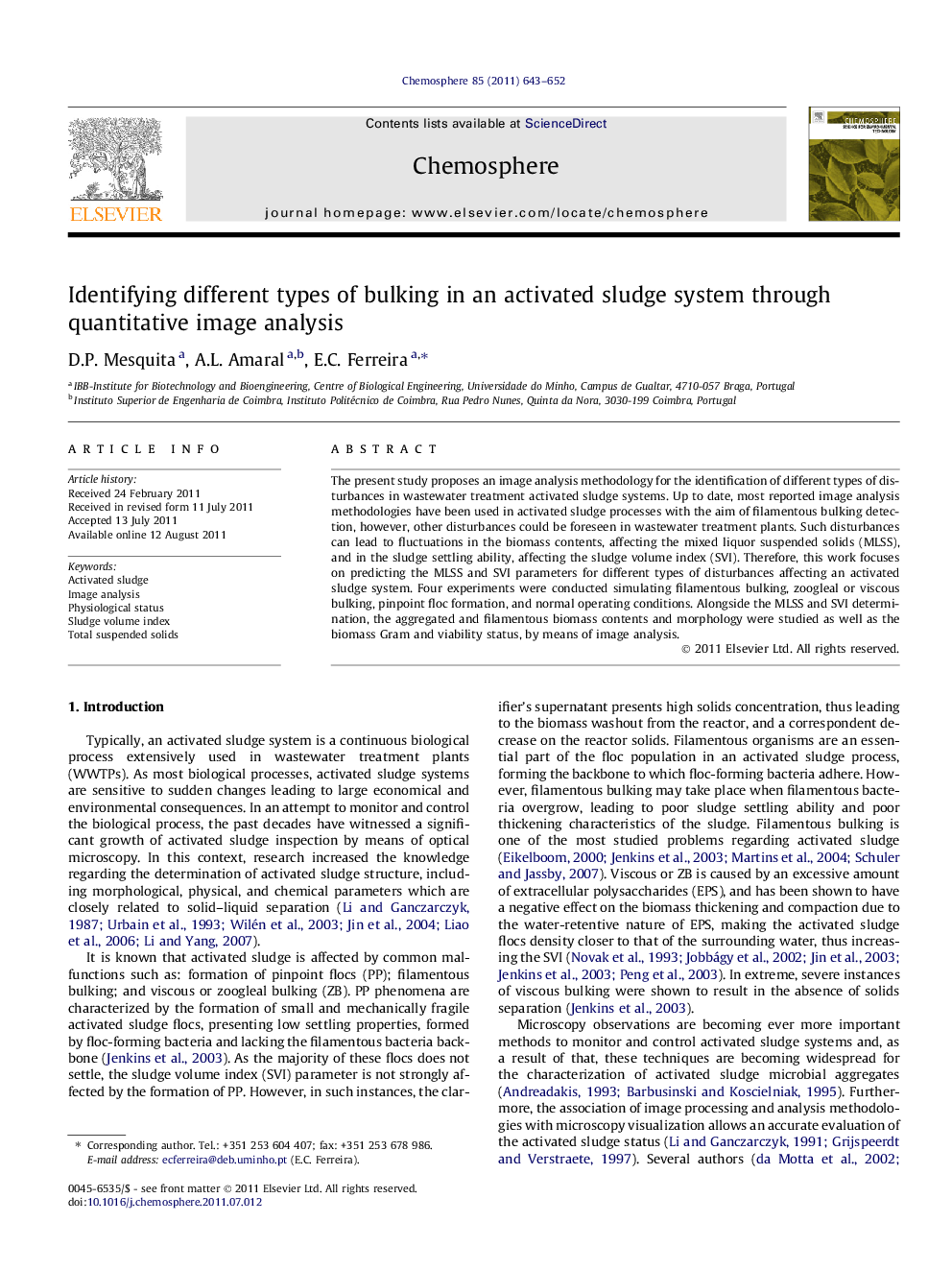| Article ID | Journal | Published Year | Pages | File Type |
|---|---|---|---|---|
| 4410591 | Chemosphere | 2011 | 10 Pages |
The present study proposes an image analysis methodology for the identification of different types of disturbances in wastewater treatment activated sludge systems. Up to date, most reported image analysis methodologies have been used in activated sludge processes with the aim of filamentous bulking detection, however, other disturbances could be foreseen in wastewater treatment plants. Such disturbances can lead to fluctuations in the biomass contents, affecting the mixed liquor suspended solids (MLSS), and in the sludge settling ability, affecting the sludge volume index (SVI). Therefore, this work focuses on predicting the MLSS and SVI parameters for different types of disturbances affecting an activated sludge system. Four experiments were conducted simulating filamentous bulking, zoogleal or viscous bulking, pinpoint floc formation, and normal operating conditions. Alongside the MLSS and SVI determination, the aggregated and filamentous biomass contents and morphology were studied as well as the biomass Gram and viability status, by means of image analysis.
► Different operational disorders were studied in an activated sludge system. ► Suspended solids and sludge volume index were affected during the experiments. ► Image analysis tools were applied for aggregates and filaments characterization. ► Image analysis parameters revealed the nature of each operational disturbance.
